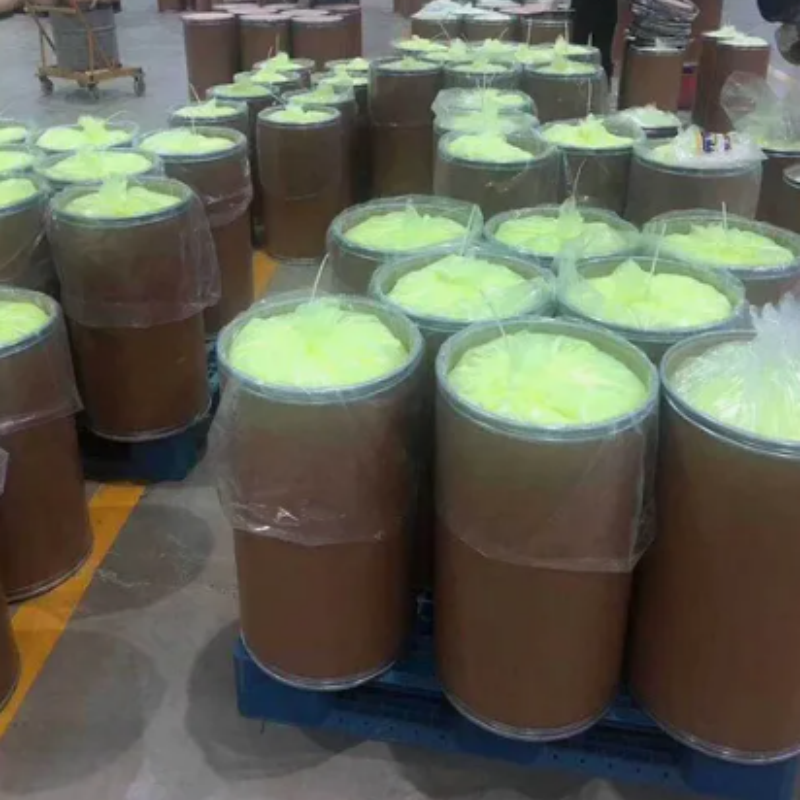-
Categories
-
Pharmaceutical Intermediates
-
Active Pharmaceutical Ingredients
-
Food Additives
- Industrial Coatings
- Agrochemicals
- Dyes and Pigments
- Surfactant
- Flavors and Fragrances
- Chemical Reagents
- Catalyst and Auxiliary
- Natural Products
- Inorganic Chemistry
-
Organic Chemistry
-
Biochemical Engineering
- Analytical Chemistry
-
Cosmetic Ingredient
- Water Treatment Chemical
-
Pharmaceutical Intermediates
Promotion
ECHEMI Mall
Wholesale
Weekly Price
Exhibition
News
-
Trade Service
Electrical engineers from the University of California, San Diego have developed a new technology that can greatly improve the resolution of ordinary light mirrors, which can be directly used to observe finer structures and details in living cells
.
After applying this new technology, the traditional optical microscope can be turned into a so-called super-resolution microscope
.
This technique mainly uses a special engineering material that shortens the wavelength of light when it illuminates the sample-this reduced light essentially allows the microscope to image with higher resolution
.
? Professor Zhaowei Liu of the Department of Electrical and Computer Engineering at the University of California, San Diego, said: “This material converts low-resolution light into high-resolution light
.
It is very simple and easy to use
.
Just put the sample in Material, and then put the whole thing under an ordinary microscope-no fancy modification needed
.
" This new technology, published in "Nature Communications", overcomes a limitation of traditional optical microscopes-low resolution
.
Light microscopes are useful for imaging live cells, but they cannot be used to see smaller things
.
The resolution of traditional optical microscopes is limited to 200 nanometers, which means that any objects closer than this distance will not be observed
.
Although there are more powerful tools, such as electron microscopes, whose resolution can see subcellular structures, they cannot be used to image live cells because the sample needs to be placed in a vacuum chamber
.
Professor Liu said: "The main challenge is to find a technology that has very high resolution and is safe for living cells
.
" The technology developed by Liu's team combines these two characteristics
.
With it, traditional optical microscopes can be used to image subcellular structures of living bodies with a resolution of up to 40 nanometers
.
The technique consists of a microscope slide coated with a light-shrinking material called a hyperbolic metamaterial
.
It is composed of alternating layers of nano-scale silver and silica glass
.
When light passes through, its wavelength shortens and scatters, producing a series of random high-resolution spot patterns
.
When a sample is mounted on a glass slide, it is illuminated by the series of spot light patterns in different ways
.
This produces a series of low-resolution images, which are captured and then pieced together by a reconstruction algorithm to produce a high-resolution image
.
The researchers tested their technology with a commercial inverted microscope
.
They were able to image fine features (such as actin filaments) in fluorescently labeled Cos-7 cells - features that cannot be clearly distinguished using a microscope alone
.
The technology also allows researchers to clearly distinguish between tiny fluorescent beads and quantum dots with an interval of 40 to 80 nanometers
.
.
After applying this new technology, the traditional optical microscope can be turned into a so-called super-resolution microscope
.
This technique mainly uses a special engineering material that shortens the wavelength of light when it illuminates the sample-this reduced light essentially allows the microscope to image with higher resolution
.
? Professor Zhaowei Liu of the Department of Electrical and Computer Engineering at the University of California, San Diego, said: “This material converts low-resolution light into high-resolution light
.
It is very simple and easy to use
.
Just put the sample in Material, and then put the whole thing under an ordinary microscope-no fancy modification needed
.
" This new technology, published in "Nature Communications", overcomes a limitation of traditional optical microscopes-low resolution
.
Light microscopes are useful for imaging live cells, but they cannot be used to see smaller things
.
The resolution of traditional optical microscopes is limited to 200 nanometers, which means that any objects closer than this distance will not be observed
.
Although there are more powerful tools, such as electron microscopes, whose resolution can see subcellular structures, they cannot be used to image live cells because the sample needs to be placed in a vacuum chamber
.
Professor Liu said: "The main challenge is to find a technology that has very high resolution and is safe for living cells
.
" The technology developed by Liu's team combines these two characteristics
.
With it, traditional optical microscopes can be used to image subcellular structures of living bodies with a resolution of up to 40 nanometers
.
The technique consists of a microscope slide coated with a light-shrinking material called a hyperbolic metamaterial
.
It is composed of alternating layers of nano-scale silver and silica glass
.
When light passes through, its wavelength shortens and scatters, producing a series of random high-resolution spot patterns
.
When a sample is mounted on a glass slide, it is illuminated by the series of spot light patterns in different ways
.
This produces a series of low-resolution images, which are captured and then pieced together by a reconstruction algorithm to produce a high-resolution image
.
The researchers tested their technology with a commercial inverted microscope
.
They were able to image fine features (such as actin filaments) in fluorescently labeled Cos-7 cells - features that cannot be clearly distinguished using a microscope alone
.
The technology also allows researchers to clearly distinguish between tiny fluorescent beads and quantum dots with an interval of 40 to 80 nanometers
.







